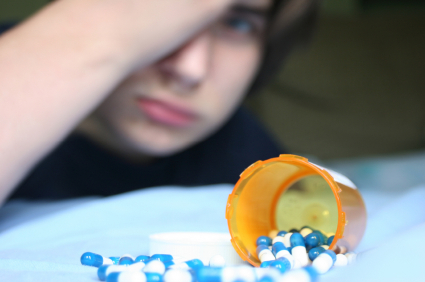The Explosive Combination of Bipolar Disorder and Substance Abuse
At the 2012 annual meeting on pediatric bipolar disorder sponsored by the Ryan Licht Sang Foundation and Massachusetts General Hospital, Timothy E. Wilens gave a plenary talk on “The Explosive Combination of Bipolar and Substance Abuse.”
Wilens cited the statistic that 10% of adolescents in the general US population have at some time received a diagnosis of a substance abuse disorder. The age of onset of substance abuse peaks between ages 15 and 20.
Wilens said that in a recent survey about use in the past month, among participants in the general population aged 12 or higher with substance use, about 50% use marijuana and about 50% use prescription narcotics (often obtained from their parents’ medicine chest).
The rate of mortality from substance abuse has risen dramatically since 1993 and now approximates that from automobile accidents. According to Wilens, rates of emergency room visits and fatalities have increased recently, and this has been linked to opiate overdoses.
Adolescents with bipolar disorder are at greatly increased risk of substance abuse compared to the general population. Most substance abuse follows the onset of bipolar disorder, not vice versa.
Wilens cited the data of researcher Ben Goldstein that on 8-year follow up, 32% of bipolar adolescents developed a substance use disorder. Those treated with antimanic agents were much less likely to develop a substance use disorder. MORAL: Treat bipolar disorder psychopathology in adolescents well and help them avoid substance abuse.
Children with persistent emotion dysregulation were: 1) more likely to develop a substance use disorder; 2) more likely to begin using substances earlier; and 3) more likely to have a more severe form of combined (multiple) substance use disorders.
Treating Substance Use
Wilen suggested that a good interview is better than urine toxicology screens for assessing substance use. He suggested the following treatment paradigm:
1. Aggressive psychoeducation about substance use disorders for parents and children, starting before the child reaches age 12.
2. Close monitoring of the child’s mood and substance use.
3. Use of groups, cognitive behavioral therapy (CBT), dialectical behavior therapy (DBT), and motivational enhancement. That is, increase interest and interaction about what is not going well. Parents can engage with the child about how best to improve the child’s life, e.g. asking, “Do you want to return to a sports team or receive permission to drive a car again? How can we help get you there?”
4. Working with parents even if their child does not come to initial sessions.
Some pharmacological approaches can be useful for substance abuse. Geller et al. published an article in 1998 showing that lithium helped decrease substance use. A 2011 article by DelBello et al. showed that quetiapine plus topiramate was more helpful in decreasing marijuana use than quetiapine plus placebo.
Editor’s Note: Another option not mentioned by Wilens is N-acetylcysteine (NAC), which is useful for a variety of substance use disorders and addictions include smoking, alcohol, marijuana, cocaine, and heroin. (See our review in BNN Volume 14, Issue 1 from 2010 for a discussion of possible mechanisms of these effects. Safety in children has been demonstrated in a study by Fung et al. in children with autism aged 8 to 17. Positive effects on depression have also been reported in adults with bipolar disorder, in whom NAC substantially beat placebo after about 3 months).
Bipolar disorder in an adolescent is a medical emergency and using multiple methods for treating the illness well and heading off the development of a substance use disorder may be life saving. Psychoeducation is a must. Bipolar disorder and substance abuse in combination are like a metastatic malignancy; all the therapeutic stops must be pulled out in order to slow it or cure it.
Not incidentally, Wilens indicated that from a political/economic perspective, substance-related treatment is highly cost effective. He noted that for every dollar spent, 4 to 7 dollars are saved in reduced crime, legal costs, and theft alone. When health care savings are included, the savings are about $12 for every $1 spent.
Contact Wilens’ clinic at Massachusetts General Hospital at armsmgh@partners.org or (617) 643-4699. The Massachusetts General Hospital website on Addictions is http://www.addictionanswers.com.


